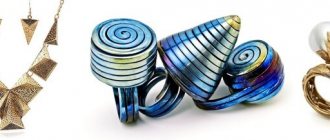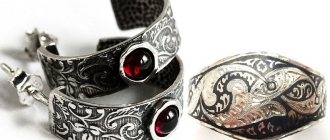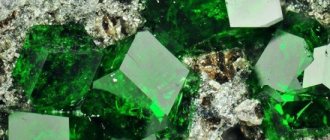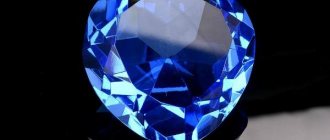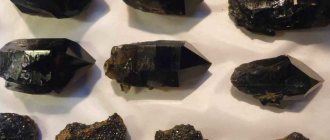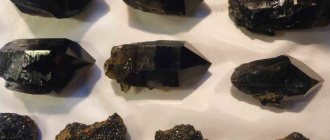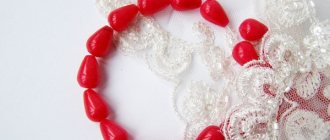Production and manufacturing
Due to its prevalence in nature, mining ore containing titanium is not difficult. The most common types of ore that contain this metal are brookite, ilmenite, anatase and rutile. However, further processing of titanium (melting, hardening and aging) is considered expensive. There are several stages in obtaining pure metal from ore:
- First of all, titanium slag is extracted by heating ilmenite to 1650 degrees.
- Next, the slag goes through a chlorination process.
- After this, titanium sponge is produced using resistance furnaces.
- To obtain pure metal, the final processing step is the refining process.
If you need to obtain titanium ingots, a sponge based on it is melted in a vacuum furnace.
Magnesium-thermal process
Magnesium thermal reduction is a popular method for obtaining metal. Carrying out the technological process:
- The circulating magnesium condensate melts.
- The magnesium chloride condensate is drained.
- At a temperature of 800 degrees, liquid titanium tetrachloride with liquid magnesium is fed into a mold to solidify. Feed rate - 2.1–2.3 g/h cm2.
Gradually the temperature drops to 600 degrees.
Calcium hydride method
This is an industrial method of metal recovery. Work process:
- At a temperature of 500 degrees Celsius, calcium metal is saturated with hydrogen.
- Next, it is mixed with titanium dioxide. The components are heated in a retort, gradually increasing the temperature to 1100 degrees.
- The sintered components are washed out of the retort.
- Next, treatment is carried out with hydrochloric acid.
- Titanium powder is dried and baked in induction ovens at a temperature of about 1400 degrees.
The sintered mass should be subjected to a pressure of 10-3 mm.
Electrolysis method
A method for producing an alloy based on the use of electric current. Voltage affects TiO2, TiCl4. Before this, they are dissolved using molten fluoride salts.
Iodide method
Method for obtaining metal after thermal dissociation of TiJ4. Initially, it is obtained by reacting iodine vapor with titanium metal.
To obtain a high purity alloy, it is necessary to use the latter method of obtaining the compound. The first three methods allow you to quickly obtain technical titanium.
Design ideas
After choosing the material, attention turns to the appearance of the ring. Modern jewelry offers a huge palette of different models, and newlyweds can choose based on various signs and traditions, as well as their own aesthetic taste.
Matte or glossy, with a single large stone or a scattering of small ones, with engraving or spraying - there are incredibly many interesting solutions. When choosing a specific piece of jewelry, it is worth considering that wedding rings are never taken off, so the design should fit the entire wardrobe, both everyday and festive , and also look appropriate on both a young and an old person.
On the other hand, traditions are changing. Some couples buy new rings for their anniversary, which allows them to choose an unusual design for their wedding. Titanium is an extremely convenient alloy in this regard, because you can play not only with the shape and decor, but also with the color of the ring itself.
Classic without stone
Minimalistic and elegant rings, round or square in cross-section, look great without patterns or additional elements. According to tradition, it is believed that any roughness on a wedding ring leads to quarrels, so the jewelry must be smooth.
A ring with a simple design is easier to combine with any style of clothing ; it is not too striking, but at the same time adds an aristocratic touch to the overall image.
Idea! Matte options without decoration look laconic and elegant, while they contain notes of tenderness, especially if you choose a pastel shade.
Smooth rings are easier to care for, and polishing only makes titanium brighter without reducing the weight of the product or thinning it.
With pattern
The pattern on a titanium ring is applied either by sputtering or engraving, or by inserting other metals.
An interesting Japanese technique is mokume-gane, in which materials are not fused, but seem to be glued together. The resulting abstract patterns will appeal to lovers of elegant and unusual jewelry. Of course, the cost of such an accessory will increase significantly compared to purely titanium analogues, but the appearance will be absolutely luxurious.
Platinum, gold of various colors, and silver are used as sputtering. Noble metals become less capricious from the proximity of titanium, but such products will still be inferior in properties to the pure alloy.
With stone
If you want to get a luxurious piece of jewelry, then an excellent option is inlay with a precious stone. It can be a single large crystal of one shape or another or a scattering of small pebbles.
The diamond edge looks interesting, creating charming shimmers with every movement of the hand. This solution is especially popular when using black titanium - the appearance of the accessory is elegant and at the same time unusual.
In addition to diamonds, other precious and semi-precious stones are used - sapphires, emeralds, rubies, pearls. Be sure to study the properties of the selected stone, as each of them requires certain care.
If titanium is not afraid of any vicissitudes of fate, then an emerald is quite capable of being broken or scratched from an awkward blow, pearls do not tolerate sudden changes in temperature, and sapphire darkens. You can also pay attention to semi-precious stones - malachite, rock crystal, amethyst, amber.
Remember that each stone has its own energy and superstitions associated with it - take this into account. You can also select a crystal according to your zodiac sign.
With enamel
If the protective properties of enamel for ultra-strong titanium are completely useless, then, from an aesthetic point of view, such decor looks interesting.
There are two ways to work with enamel. Simpler, but less durable cold and more expensive hot. In both cases, it is possible to create unexpected and interesting patterns - good craftsmen are able to convey a detailed picture with the smallest details, since the palette of enamel colors is almost limitless. And since titanium rings are usually quite wide, the canvas for a unique pattern allows the imagination of the newlyweds and the jeweler to run wild.
Peculiarity! In the case of titanium rings, enamel is a more convenient method of decoration than engraving, so it is better to apply inscriptions or other patterns using it.
No less interesting are the thin lines of enamel running through the ring in a parallel or intersecting line. This laconic design is most often preferred by men. In this case, it is better to add precious stones not to the enamel itself, but to the space around it, so as not to overload the composition.
It is worth understanding that enamel is durable, but still glass, which in its strength cannot be compared with powerful titanium. Therefore, if you choose such a decoration, you will have to handle it much more carefully than with a pure alloy and protect the surface from impacts.
Advantages and disadvantages
Like any other metal, titanium has its strengths and weaknesses. Benefits include:
- light weight;
- corrosion resistance;
- resistance to high temperatures;
- high strength - greater than that of the best steels.
Flaws:
- Dust and chips remaining after processing titanium workpieces can ignite at a temperature of 400 degrees.
- This metal is difficult to weld and is practically impossible to cut.
- The costly method of obtaining metal from ore causes its high cost.
However, despite the existing disadvantages, the material and its alloys are widely used in various industries.
Light weight
Titanium jewelry: care and storage
Like any jewelry, titanium products also need care. Unfortunately, their amazing strength and corrosion resistance do not provide 100% protection from damage.
However, if you follow a few simple rules, titanium jewelry can delight not only you, but also your children and grandchildren.
1. Firstly, like any jewelry, titanium products should be stored in an individual bag or box. If you choose the second option, make sure that the jewelry does not come into contact with products that contain diamonds. Still, titanium is less durable than diamond. And it can easily get scratched from contact with the latter.
Also keep titanium jewelry away from other metal products.
2. Titanium jewelry needs polishing. It is enough to carry out this procedure once every six months. Over time, you can resort to it less often. Polishing will preserve the shine and attractiveness of the product. It will look like new for many years to come.
3. If the jewelry becomes dirty, it is better to clean it in warm water and soapy water. And then blot with a soft napkin or cloth. Air drying is not recommended. If you store and wear it carefully, cleaning your jewelry once every few months is sufficient. If you wear a titanium product every day, wipe it with a microfiber cloth a couple of times a week, without using cleaning products.
Characteristics and properties
The characteristics of titanium directly depend on the amount of impurities contained in its composition. Physical parameters:
- Specific strength - 450 MPa.
- The melting point of titanium is 1668 degrees.
- Boiling point - 3227 degrees.
- The tensile strength of the alloys is 2000 MPa.
- The elasticity of titanium is 110.25 GPa.
- Metal hardness - 103 HB.
- The yield strength is 380 MPa.
The structure and properties of this metal determine its low electrical conductivity. Under normal conditions, titanium has a high resistance to corrosion processes.
Metal
Physical properties of metal
Titanium is a silvery-white metal. It is refractory, slightly heavier than aluminum. However, with slightly more weight, titanium has three times the strength. Amenable to various processing methods. Resistant to moisture and acids. The main properties of titanium have been described above.
Chemical properties of titanium
Under normal conditions, an oxide film forms on the surface of this metal, which protects it from the destructive effects of moisture and acids. The chemical properties of titanium include its resistance to alkalis and chlorine solutions. Has an oxidation state of +4. It begins to interact with oxygen at a temperature of 600 degrees. Titanium filings may spontaneously ignite when heated.
Titanium
In the periodic table, the chemical element titanium is designated as Ti (Titanium) and is located in a secondary subgroup of group IV, in the 4th period under atomic number 22. It is a silvery-white solid metal that is part of a large number of minerals. You can buy titanium on our website.
Titanium was discovered at the end of the 18th century by chemists from England and Germany, William Gregor and Martin Klaproth, independently of each other with a six-year difference. The name of the element was given by Martin Klaproth in honor of the ancient Greek characters of the titans (huge, strong, immortal creatures).
As it turned out, the name became prophetic, but it took humanity more than 150 years to become familiar with all the properties of titanium. Only three decades later it was possible to obtain the first sample of titanium metal. At that time, it was practically not used due to its fragility.
In 1925, after a series of experiments, using the iodide method, chemists Van Arkel and De Boer extracted pure titanium.
Due to the valuable properties of the metal, engineers and designers immediately paid attention to it. It was a real breakthrough. In 1940, Kroll developed a magnesium-thermal method for obtaining titanium from ore. This method is still relevant today.
Physical and mechanical properties
Titanium is a fairly refractory metal. Its melting point is 1668±3°C. In this indicator, it is inferior to such metals as tantalum, tungsten, rhenium, niobium, molybdenum, tantalum, zirconium. Titanium is a paramagnetic metal. In a magnetic field it is not magnetized, but is not pushed out of it.
Image 2 Titanium has a low density (4.5 g/cm³) and high strength (up to 140 kg/mm²). These properties practically do not change at high temperatures. It is more than 1.5 times heavier than aluminum (2.7 g/cm³), but 1.5 times lighter than iron (7.8 g/cm³). In terms of mechanical properties, titanium is much superior to these metals.
In terms of strength, titanium and its alloys are on par with many grades of alloy steel.
Titanium is as resistant to corrosion as platinum. The metal has excellent resistance to cavitation conditions. Air bubbles formed in a liquid medium during active movement of a titanium part practically do not destroy it.
It is a durable metal that can resist fracture and plastic deformation. It is 12 times harder than aluminum and 4 times harder than copper and iron. Another important indicator is the yield strength. As this indicator increases, the resistance of titanium parts to operational loads improves.
In alloys with certain metals (especially nickel and hydrogen), titanium is able to “remember” the shape of the product created at a certain temperature. Such a product can then be deformed and it will retain this position for a long time. If the product is heated to the temperature at which it was made, then the product will take its original shape. This property is called “memory”.
The thermal conductivity of titanium is relatively low and the coefficient of linear expansion is correspondingly low. It follows from this that metal is a poor conductor of electricity and heat. But at low temperatures it is a superconductor of electricity, which allows it to transmit energy over considerable distances. Titanium also has high electrical resistance.
Pure titanium metal is subject to various types of cold and hot processing. It can be drawn and wired, forged, rolled into strips, sheets and foil with a thickness of up to 0.01 mm.
The following types of rolled products are made from titanium: titanium strip , titanium wire , titanium pipes , titanium bushings , titanium circle , titanium rod .
Chemical properties
Pure titanium is a chemically active element. Due to the fact that a dense protective film is formed on its surface, the metal is highly resistant to corrosion.
It does not undergo oxidation in air, in salty sea water, and does not change in many aggressive chemical environments (for example: diluted and concentrated nitric acid, aqua regia). At high temperatures, titanium interacts with reagents much more actively. In air at a temperature of 1200°C, it ignites.
When ignited, the metal gives off a bright glow. An active reaction also occurs with nitrogen, with the formation of a yellow-brown nitride film on the surface of titanium.
Reactions with hydrochloric and sulfuric acids at room temperature are weak, but when heated, the metal dissolves intensively. As a result of the reaction, lower chlorides and monosulfate are formed. Weak interactions also occur with phosphoric and nitric acids. The metal reacts with halogens. The reaction with chlorine occurs at 300°C.
An active reaction with hydrogen occurs at a temperature slightly above room temperature. Titanium actively absorbs hydrogen. 1 g of titanium can absorb up to 400 cm³ of hydrogen. Heated metal decomposes carbon dioxide and water vapor. Interaction with water vapor occurs at temperatures above 800°C. As a result of the reaction, metal oxide is formed and hydrogen evaporates.
Types of alloys
Titanium alloys can be divided into three large groups:
- Compounds based on chemical compounds. Representatives of this group have a heat-resistant structure and low density. A decrease in density directly affects a decrease in the weight of the material. Such alloys are used in the manufacture of parts for cars, frames for aircraft and hulls for ships.
- Heat-resistant alloys with low density. This is an analogue of compounds with nickel, but at a lower price. Depending on the chemical composition, the resistance of the titanium alloy to high temperatures varies.
- Structural - high-strength connections that are easy to process due to their high ductility. These alloys are used to make parts that are installed in equipment that operates under heavy loads.
When producing titanium alloys, official markings are used that indicate what metals it is combined with.
Who are they suitable for?
Such material will appeal to self-confident people who keep up with the times and create their own unique traditions. Love, as eternal as the alloy used for spaceships, is certainly quite a beautiful symbol.
Titanium will be appreciated by young people who want something special, for example wearing sophisticated rings with a purple or black gradient.
A lightweight but impressive-looking alloy is ideal for men who want to emphasize their unbending character. On fragile women's fingers, such rings also look fabulous, regardless of the width and decor.
Titanium is an excellent option for newlyweds who do not want to overpay , because in this case budget does not prevent the product from maintaining excellent quality.
Properties and applications of titanium alloys
Titanium alloys do not have the main disadvantages of pure metal. When adding third-party materials, its characteristics change. Key properties of titanium alloys:
- resistance to corrosion processes;
- low density;
- high specific strength.
Alloys are also more resistant to high temperatures. Thanks to increased protection against acids and alkalis, alloys based on this material have gained popularity in the chemical industry and medicine. They are used in construction, production of equipment, cars, airplanes, rockets and ships.
Titanium and compounds based on it are common in various industries. This metal has unique characteristics that set it apart from other materials. Due to the difficulties of obtaining pure metal, its price is quite high.
Recommendations
The titanium ring must be the right size, since it is impossible to melt it down. To avoid making a mistake in your choice, try trying on the jewelry twice - in the morning and in the evening, to remove the changing variable of swelling.
If you feel any discomfort, it is better to look for other options. In the end, you are choosing not just an accessory, but an eternal symbol of your love, which cannot be removed, but getting health problems because of it is extremely imprudent.
To make the ring look perfect, consider the size and shape of your fingers and wrist:
- Fragile long fingers are best combined with graceful airy shapes;
- On thin fingers with narrow wrists, wide rings are perfect, but in this case you should carefully choose the appropriate design;
- Short and thick fingers look better in classic rings with a width of 4 to 6 mm;
- If you choose a ring with stones, mother of pearl and enamel, remember that all these elements are more fragile than the base metal. They are susceptible to negative environmental influences, and therefore you should treat the product more carefully than a purely titanium ring.
Idea! Paired rings that have an overlapping pattern or two halves of the same inscription are very romantic. No less popular are completely identical jewelry, differing only in size.


